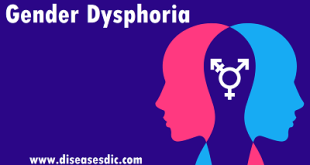Introduction
Gestational diabetes mellitus defined as “carbohydrate intolerance of variable severity with onset or first recognition during pregnancy”. Diabetes is a common condition in which the body’s cells are unable to effectively obtain glucose from the bloodstream. Glucose is required to provide the body with energy for day-to-day activities. The hormone insulin moves glucose from the blood into the body’s cells, where it can be used for energy.
Pathophysiology of gestational diabetes mellitus
During pregnancy, the maternal tissues become insensitive to insulin. It occurs due to the placental lactogen hormone and other hormones, such as progesterone, cortisol and growth hormone. When the pancreas is unable to offer an appropriate response of insulin to compensate normal insulin resistance, GDM is present.
The resistance to insulin leads to maternal hyperglycemia, and this stimulates the fetal hyperinsulinemia. Insulin secretion increases at the beginning of pregnancy, whereas the sensitivity to insulin remains unchanged. At around 20 weeks of pregnancy, insulin sensitivity reduces progressively and it is even lower in the third trimester. However, after birth, the GMD disappears almost immediately
History behind GDM
The first documented evidence of the effects of hyperglycaemia in pregnancy in the modern era was in 1824, when Bennewitz recorded a case of severe fetal macrosomia and stillbirth in a 22 year old multigravida woman in Berlin. She had symptoms of severe hyperglycaemia, but he was only able to estimate this by boiling the urine to dryness.
Until the discovery of insulin in 1923 there was no effective treatment for this condition, and the outcome of pregnancy for both mother and fetus was usually disastrous. The first attempt to define the concept of ‘hyperglycaemia in pregnancy’ was over 50 years ago in Boston USA.
A sub-committee of the World Health Organisation subsequently decided that the results of a two hour 75g oral glucose tolerance test derived from non-pregnant men and women could be used in pregnancy, with a cut-off point decided by consensus. These two different sets of criteria have continued to be used in various parts of the world to the present day.
The term ‘Gestational Diabetes Mellitus’ (GDM) was not universally used until popularised by Freinkel in Chicago in a major paper in 1980. In this wide ranging presentation ‘Of Pregnancy and Progeny’ , incorporating several important insights into the pathophysiology of glucose metabolism in both mother and fetus, he developed his concepts of more subtle consequences of faulty maternal insulinisation. This led to an American Diabetes Association sponsored workshop, and a definition of gestational diabetes as ‘glucose intolerance with onset or first recognition during pregnancy’
Epidemic view of gestational diabetes
The prevalence of GDM in India varied from 3.8 to 21% in different parts of the country, depending on the geographical locations and diagnostic methods used. GDM has been found to be more prevalent in urban areas than in rural areas. For a given population and ethnicity, the prevalence of GDM corresponds to the prevalence of impaired glucose tolerance (IGT) (in non-pregnant adult) within that given population.
What causes gestational diabetes mellitus?
- Similar to type 2 diabetes, gestational diabetes develops when the body is no longer able to respond effectively to insulin – a condition called insulin resistance.
- When the body’s cells don’t properly absorb glucose, the simple sugar builds up in the bloodstream, resulting in elevated levels of glucose on blood tests.
- Insulin resistance in pregnant women is due mainly to hormonal changes.
- More specifically, there’s an imbalance between levels of certain insulin- or glucose-affecting hormones in the body during pregnancy.
- The hormones that raise blood glucose or break down insulin override those that lower blood glucose, resulting in elevated blood glucose levels. These hormones include:
- Growth hormones
- Cortisol (a stress hormone)
- Estrogen and progesterone
- Human placental lactogen (a hormone produced in the placenta that helps break down fat from the mother to provide energy for the fetus)
- Placental insulinase (another hormone from the placenta that inactivates insulin)
- What’s more, other changes during pregnancy — such as eating more, exercising less, and having larger fat deposits — can contribute to insulin resistance.
Who is at increased risk of gestational diabetes?
- Older women, especially over 30 years of age
- Body mass index more than 30 kg/m²
- Women with a family history of type 2 diabetes
- Women who are overweight
- People of Aboriginal and Torres Strait Islander background
- Women from certain ethnic backgrounds including:
- South Asian
- Vietnamese
- Chinese
- Middle Eastern
- Polynesian/Melanesian
- Women who have had large babies or obstetric complications
- Woman who have had polycystic ovarian syndrome
- Previous occurrence of GDM
- Persistent glycosuria
- Pregnancy-induced hypertension
- History of recurrent miscarriage
- Unexplained fetal death history
- Macrosomia
Complications associated with GDM
- Congenital malformations: congenital malformations is associated with the presence of undiagnosed type 2 diabetes among women with GDM
- Birth Weight and Adiposity: There is a positive correlation between maternal blood glucose levels, increased birth weight, and neonatal adiposity. This relationship is probably due to fetal hyperinsulinism secondary to maternal hyperglycemia.
- Perinatal death: The increased risk of perinatal death associated with GDM seems attributable to undiagnosed type 2 diabetes. Maternal obesity is often associated with type 2 diabetes or GDM and is an additional risk factor for perinatal death.
- Birth Injuries: Birth injuries and brachial plexus injuries are rarely associated with GDM and an increased risk of birth injuries due to untreated GDM. The absolute risk is low and mainly associated with macrosomia.
- The most common neonatal complications include hypoglycemia, hypocalcemia, polycythemia, jaundice requiring phototherapy, trauma (shoulder dystocia) and respiratory distress syndrome.
- The most common maternal complications are: risk of diabetes mellitus recurrence in future pregnancies, future possibility of diabetes mellitus, polyhydramnios, pregnancy toxaemia, urinary tract infection, candidiasis, higher incidence of premature childbirth, cesarean delivery.
Symptoms
Usually there are no symptoms, or the symptoms are mild and not life threatening to the pregnant woman. The blood sugar (glucose) level usually returns to normal after delivery. Symptoms may include:
- Blurred vision
- Fatigue
- Frequent infections, including those of the bladder, vagina, and skin
- Increased thirst
- Increased urination
- Nausea and vomiting
- Weight loss despite increased appetite
Diagnosis and Testing of GDM
Gestational diabetes usually starts halfway through the pregnancy. GDM is diagnosed if the woman has either:
- A fasting plasma glucose level of ≥5.6 mmol/L; or
- A 2-hour plasma glucose level of ≥7.8 mmol/L.
Oral glucose tolerance test
All pregnant women should receive an oral glucose tolerance test between the 24th and 28th week of pregnancy to screen for the condition. Women who have risk factors for gestational diabetes may have this test earlier in the pregnancy.
Criteria for Diagnosis of GDM with a 2-hour Pregnancy Oral GTT
| Diagnosis | Fasting plasma glucose
(mmol/l) |
1-hour glucose (mmol/l)
following 75g oral glucose load |
2-hour glucose
(mmol/l) following 75g oral glucose load |
| Normal | < 5.1 | < 10.0 | < 8.5 |
| GDM | 5.1 – 6.9 | > 10.0 | 8.5 – 11.0 |
Glycosylated hemoglobin, or hemoglobin A1c test
Glycosylated hemoglobin, or hemoglobin A1c, is another test that may be performed. This test is used to monitor long-term blood glucose levels in people with diabetes. The hemoglobin A1c level offers a measure of the average blood glucose level over the past few months.
Treatment of gestational diabetes mellitus
The goals of treatment are to keep blood sugar (glucose) levels within normal limits during the pregnancy, and to make sure that the growing baby is healthy.
Watching your baby
Your health care provider should closely check both you and your baby throughout the pregnancy. Fetal monitoring will check the size and health of the fetus. A nonstress test is a very simple, painless test for you and your baby.
- A machine that hears and displays your baby’s heartbeat (electronic fetal monitor) is placed on your abdomen.
- Your health care provider can compare the pattern of your baby’s heartbeat to movements and find out whether the baby is doing well.
Medical Nutrition Therapy (MNT)
All women with GDM should receive nutritional counseling. The meal pattern should provide adequate calories and nutrients to meet the needs of pregnancy. The expected weight gain during pregnancy is 300–400 g per week and total weight gain is 10–12 kg by term.
The best way to improve your diet is by eating a variety of healthy foods. You should learn how to read food labels, and check them when making food decisions. Talk to your doctor or dietitian if you are a vegetarian or on some other special diet. In general, when you have gestational diabetes your diet should:
- Be moderate in fat and protein
- Provide your carbohydrates through foods that include fruits, vegetables, and complex carbohydrates (such as bread, cereal, pasta, and rice)
- Be low in foods that contain a lot of sugar, such as soft drinks, fruit juices, and pastries
If managing your diet does not control blood sugar (glucose) levels, you may be prescribed diabetes medicine by mouth or insulin therapy.
Insulin therapy
Once diagnosis is made, medical nutritional therapy (MNT) is advised initially for 2 weeks. If MNT fails to achieve control, i.e. FPG ~90 mg/dL and/or post-meal glucose ~120 mg/dL, insulin may be initiated.
- Preferable to start with Premix insulin 30/70 of any brand. Starting dose: 4 units before breakfast
↓
Every 4th day increase 2 units till 10 units
↓
If FPG remains > 90 mg/dL advise → 6 units before breakfast and 4 units before dinner
↓
Review with blood sugar test → Adjust dose further
Total insulin dose per day can be divided as two-thirds in the morning and one-third in the evening.
Initially if post-breakfast plasma glucose is high → Start Premix 50/50
- If GDM is diagnosed in the third trimester; MNT is advised for a week. Insulin is initiated if MNT fails.
- If 2-hour PG > 200 mg/dL at diagnosis, a starting dose of 8 units of premixed insulin could be administered straightaway before breakfast and the dose has to be titrated on follow-up. Along with insulin therapy, MNT is also advised.
There are different types of premixed insulin.
- Premixed NPH/regular insulin is made by combining NPH and regular insulin.
- Newer premixed insulin is the other type of premixed insulin. It is made by combining insulin aspart (NovoLog®) or insulin lispro (Humalog®) with a longer lasting insulin made only for the mix.
Locations of insulin injection
Prevention of gestational diabetes mellitus
There are no guarantees when it comes to preventing gestational diabetes — but the more healthy habits you can adopt before pregnancy, the better. If you’ve had gestational diabetes, these healthy choices may also reduce your risk of having it in future pregnancies or developing type 2 diabetes down the road.
- Eat healthy foods. Choose foods high in fiber and low in fat and calories. Focus on fruits, vegetables and whole grains. Strive for variety to help you achieve your goals without compromising taste or nutrition. Watch portion sizes.
- Keep active. Exercising before and during pregnancy can help protect you from developing gestational diabetes. Aim for 30 minutes of moderate activity on most days of the week. Take a brisk daily walk. Ride your bike. Swim laps. If you can’t fit a single 30-minute workout into your day, several shorter sessions can do just as much good. Park in the distant lot when you run errands. Get off the bus one stop before you reach your destination. Every step you take increases your chances of staying healthy.
- Lose excess pounds before pregnancy. Doctors don’t recommend weight loss during pregnancy. But if you’re planning to get pregnant, losing extra weight beforehand may help you have a healthier pregnancy.
 Diseases Treatments Dictionary This is complete solution to read all diseases treatments Which covers Prevention, Causes, Symptoms, Medical Terms, Drugs, Prescription, Natural Remedies with cures and Treatments. Most of the common diseases were listed in names, split with categories.
Diseases Treatments Dictionary This is complete solution to read all diseases treatments Which covers Prevention, Causes, Symptoms, Medical Terms, Drugs, Prescription, Natural Remedies with cures and Treatments. Most of the common diseases were listed in names, split with categories.








Now I wanted to know if type 2 diabetes is totally curable with drugs and how?
It is not totally curable disease but it can be controlled by having proper drugs and diet chart. This type of disease can be controlled to normal level using drugs throughout the lifetime. Thank you.
I have diabetes just a mouth plz I need your advice tank you
Please monitor your Blood glucose level using BG monitor regularly. If your glucose level is beyond the normal level please consult with Diabetic specialist to get prescriptions.
My blood sugar level is normal after taking istavel and gluformin, I am a heart patient should I take these istavel ang gluformin for long period.
Please consult your cardiologist to avoid side effects.